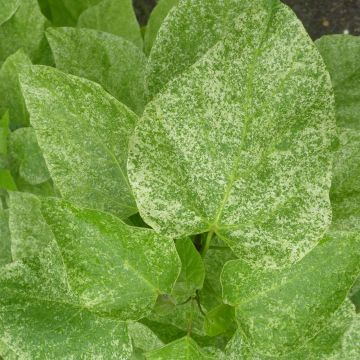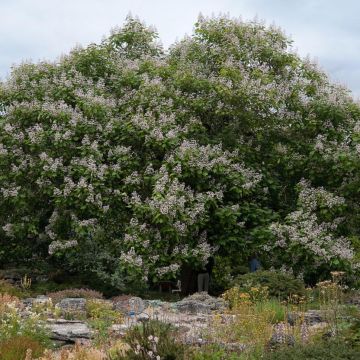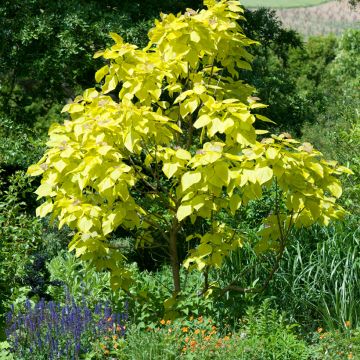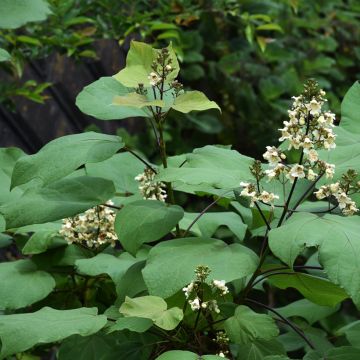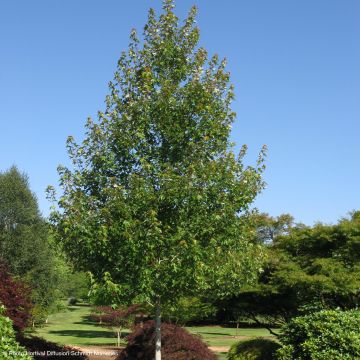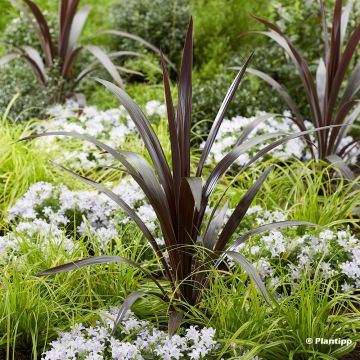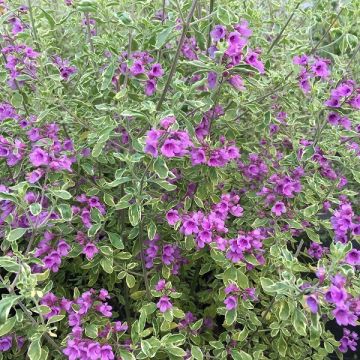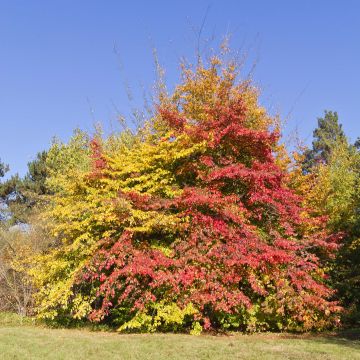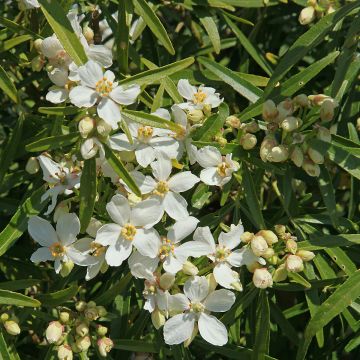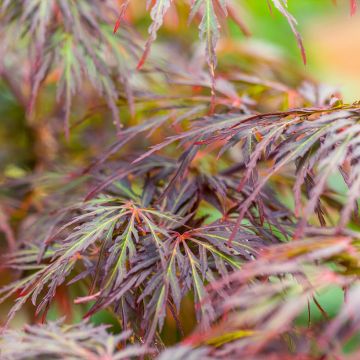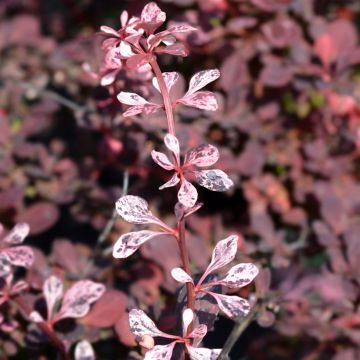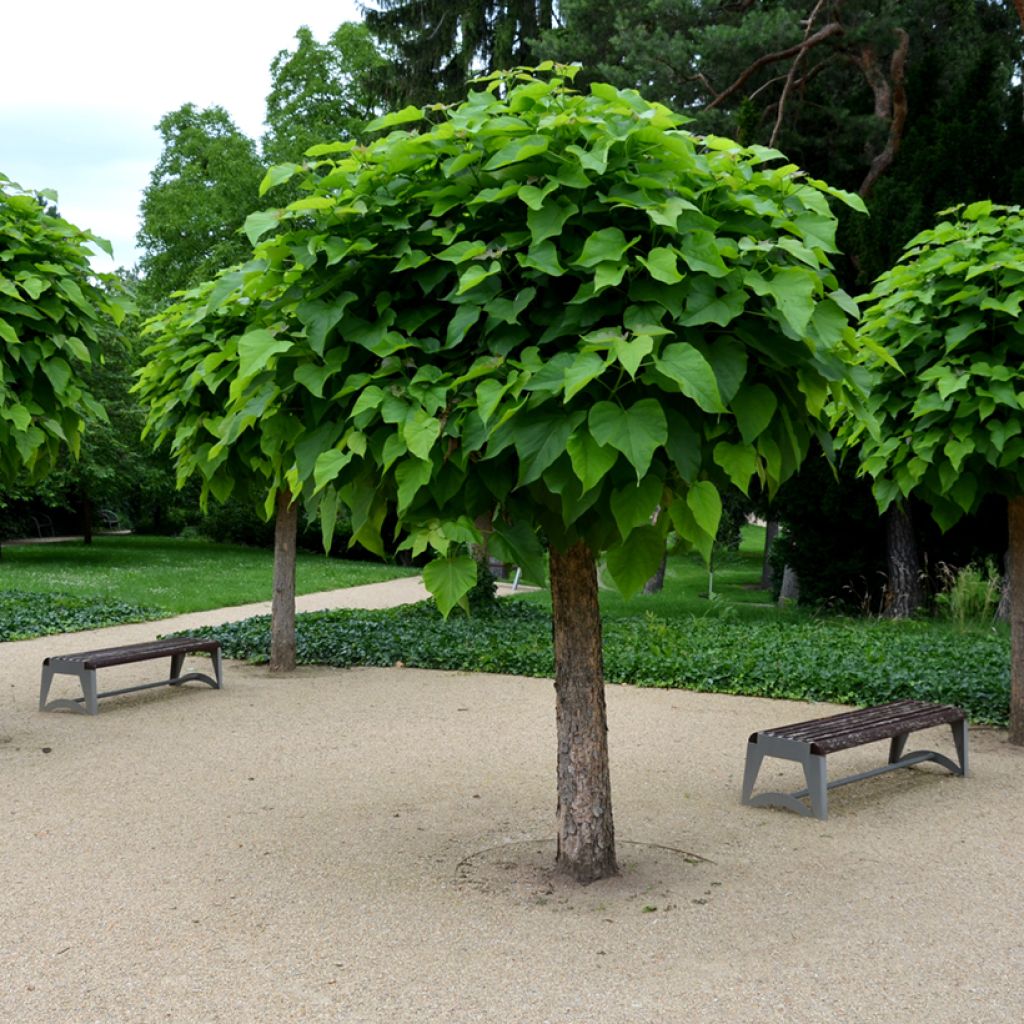

Catalpa bignonioides Nana


Catalpa bignonioides Nana
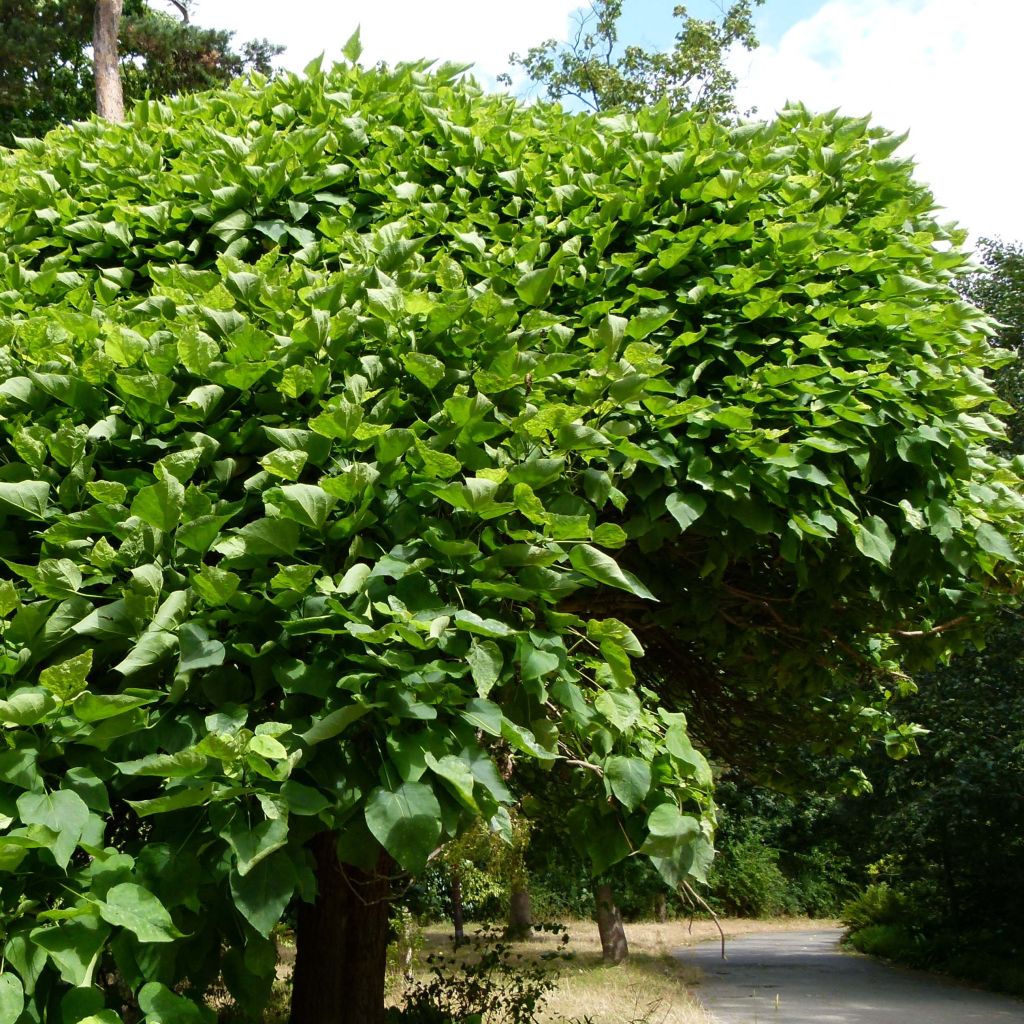

Catalpa bignonioides Nana
Catalpa bignonioides Nana
Catalpa bignonioides Nana
Indian Bean Tree, Cigar Tree, Southern Catalpa
Beautiful deciduous tree, well packaged and delivered. Planted in winter, it already looks magnificent. We can't wait to see its leafing in spring.
Daniel, 20/12/2023
Special offer!
Receive a €20 voucher for any order over €90 (excluding delivery costs, credit notes, and plastic-free options)!
1- Add your favorite plants to your cart.
2- Once you have reached €90, confirm your order (you can even choose the delivery date!).
3- As soon as your order is shipped, you will receive an email containing your voucher code, valid for 3 months (90 days).
Your voucher is unique and can only be used once, for any order with a minimum value of €20, excluding delivery costs.
Can be combined with other current offers, non-divisible and non-refundable.
Home or relay delivery (depending on size and destination)
Schedule delivery date,
and select date in basket
This plant carries a 24 months recovery warranty
More information
We guarantee the quality of our plants for a full growing cycle, and will replace at our expense any plant that fails to recover under normal climatic and planting conditions.
Would this plant suit my garden?
Set up your Plantfit profile →
Description
Catalpa bignonioides 'Nana' is an astonishing Catalpa often used in urban landscaping, but also in small gardens. This variety, grafted on a tall stem, forms a compact and flattened ball-shaped crown, similar to a vegetal parasol under which it is pleasant to shelter from the sun in summer. Its reduced growth is well adapted to small spaces, and if it does not bloom, it bears beautiful leaves with a slightly tropical appearance. This small deciduous tree with no requirements is perfect for providing shade to a terrace or a playground, preserving sunlight from October until the beginning of May.
Catalpa bignonioides, also known as the Bean Tree, Ball Catalpa or Common Catalpa, is a beautiful tree from the Bignoniaceae family: it is a cousin of climbing plants such as Campsis, Bignonia, Podranea, and other Tecomaria. Originally from the southeast of the USA, it was introduced to Europe in 1726. It is a light-loving species that appreciates rather fresh soils, tolerates limestone, and resists urban pollution very well.
The 'Nana' cultivar was selected in France by Masson nurseries around 1850. It shows slow growth, particularly compact vegetation, and smaller leaves. It is also a sterile tree that never blooms. This cultivar is most often grafted as a head on a trunk of the Catalpa bignonioides type, at about 2m (7ft 6in) - 2.50m (8ft 2in) above the ground, which gives it a characteristic silhouette of an enlarged ball placed on a massive and straight trunk, in a column. At the age of 10, this small tree will measure between 5 and 7m (16 - 23ft) in height and develop a crown 6 to 7m (19 - 23ft) wide. Its bark is grey-brown in colour, slightly channelled, and peels off over time in small flakes. Its branches are brittle, so it is necessary to protect it from strong winds. Its foliage is deciduous, appearing late in spring and falling quickly in autumn. Its leaves have an elongated heart shape, they are medium green in spring and summer, then turn yellow in autumn. Its shallow root system does not tolerate drought and makes it sensitive to strong winds. This Catalpa will benefit from being pruned severely every 2 or 3 years to remain dense.
This 'Nana' Catalpa is suitable for both small and large gardens, but it is not recommended in situations exposed to strong winds. It is ideally planted as a standalone tree in a small city garden, in the centre of a well-maintained bed composed, for example, of ground cover roses, boxwoods, creeping Japanese spindle trees, or Lonicera nitida. Its relatively shallow root system absorbs water in summer; therefore, it is preferable to choose plants that are not demanding in terms of water, or to plant outside the perimeter delimited by its crown. Plant enthusiasts looking for vegetal umbrellas will also plant, or as an alternative, the Robinia pseudoacacia 'Umbraculifera', better suited for dry soils.
Catalpa bignonioides Nana in pictures
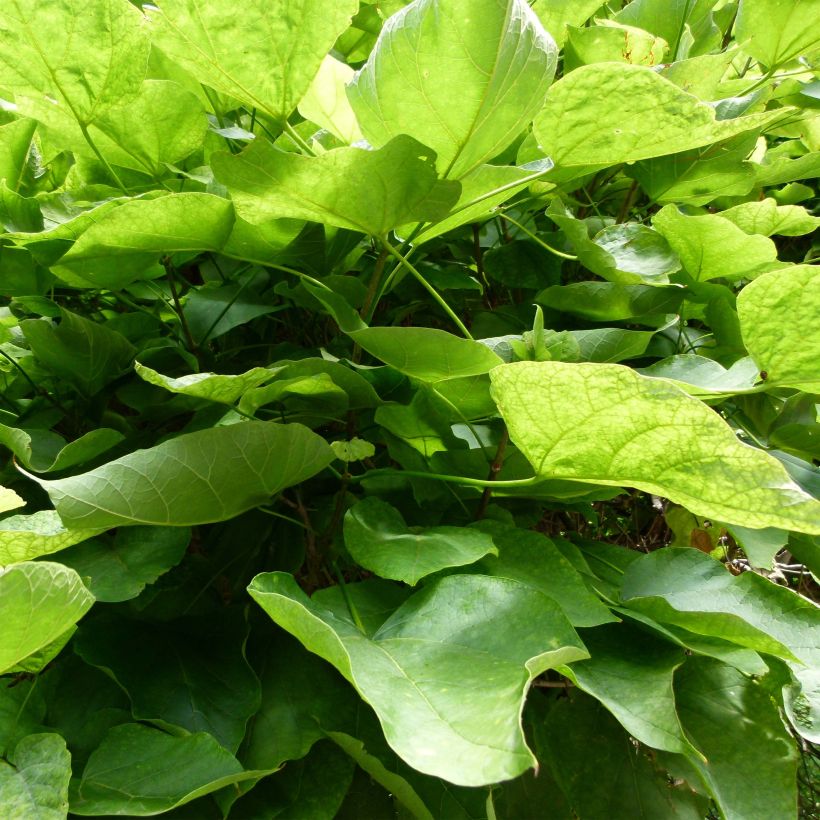

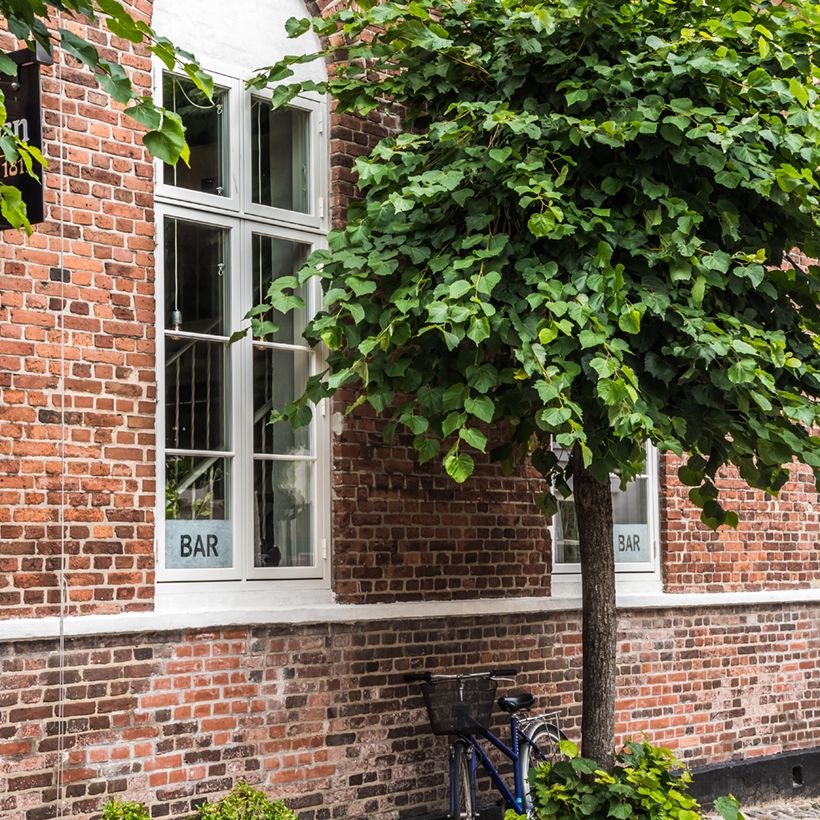

Plant habit
Flowering
Foliage
Botanical data
Catalpa
bignonioides
Nana
Bignoniaceae
Indian Bean Tree, Cigar Tree, Southern Catalpa
Cultivar or hybrid
Other Catalpa
View all →Planting and care
Plant your Catalpa bignonioides 'Nana' in a sunny location and in a clear space. Be careful not to plant it in a windy area as its wood is brittle, and not too close to the house. It thrives in any type of soil as long as it is moist, sufficiently deep, and you provide good drainage; suffocating soils can lead to the attack of wood-rotting fungi (such as Armillaria, a parasite that feeds on tree wood). After planting, water generously to eliminate air pockets. In case of drought, water for a few weeks to promote root establishment.
Planting period
Intended location
Care
Planting & care advice
-
, onOrder confirmed
Reply from on Promesse de fleurs
Similar products
Haven't found what you were looking for?
Hardiness is the lowest winter temperature a plant can endure without suffering serious damage or even dying. However, hardiness is affected by location (a sheltered area, such as a patio), protection (winter cover) and soil type (hardiness is improved by well-drained soil).

Photo Sharing Terms & Conditions
In order to encourage gardeners to interact and share their experiences, Promesse de fleurs offers various media enabling content to be uploaded onto its Site - in particular via the ‘Photo sharing’ module.
The User agrees to refrain from:
- Posting any content that is illegal, prejudicial, insulting, racist, inciteful to hatred, revisionist, contrary to public decency, that infringes on privacy or on the privacy rights of third parties, in particular the publicity rights of persons and goods, intellectual property rights, or the right to privacy.
- Submitting content on behalf of a third party;
- Impersonate the identity of a third party and/or publish any personal information about a third party;
In general, the User undertakes to refrain from any unethical behaviour.
All Content (in particular text, comments, files, images, photos, videos, creative works, etc.), which may be subject to property or intellectual property rights, image or other private rights, shall remain the property of the User, subject to the limited rights granted by the terms of the licence granted by Promesse de fleurs as stated below. Users are at liberty to publish or not to publish such Content on the Site, notably via the ‘Photo Sharing’ facility, and accept that this Content shall be made public and freely accessible, notably on the Internet.
Users further acknowledge, undertake to have ,and guarantee that they hold all necessary rights and permissions to publish such material on the Site, in particular with regard to the legislation in force pertaining to any privacy, property, intellectual property, image, or contractual rights, or rights of any other nature. By publishing such Content on the Site, Users acknowledge accepting full liability as publishers of the Content within the meaning of the law, and grant Promesse de fleurs, free of charge, an inclusive, worldwide licence for the said Content for the entire duration of its publication, including all reproduction, representation, up/downloading, displaying, performing, transmission, and storage rights.
Users also grant permission for their name to be linked to the Content and accept that this link may not always be made available.
By engaging in posting material, Users consent to their Content becoming automatically accessible on the Internet, in particular on other sites and/or blogs and/or web pages of the Promesse de fleurs site, including in particular social pages and the Promesse de fleurs catalogue.
Users may secure the removal of entrusted content free of charge by issuing a simple request via our contact form.
The flowering period indicated on our website applies to countries and regions located in USDA zone 8 (France, the United Kingdom, Ireland, the Netherlands, etc.)
It will vary according to where you live:
- In zones 9 to 10 (Italy, Spain, Greece, etc.), flowering will occur about 2 to 4 weeks earlier.
- In zones 6 to 7 (Germany, Poland, Slovenia, and lower mountainous regions), flowering will be delayed by 2 to 3 weeks.
- In zone 5 (Central Europe, Scandinavia), blooming will be delayed by 3 to 5 weeks.
In temperate climates, pruning of spring-flowering shrubs (forsythia, spireas, etc.) should be done just after flowering.
Pruning of summer-flowering shrubs (Indian Lilac, Perovskia, etc.) can be done in winter or spring.
In cold regions as well as with frost-sensitive plants, avoid pruning too early when severe frosts may still occur.
The planting period indicated on our website applies to countries and regions located in USDA zone 8 (France, United Kingdom, Ireland, Netherlands).
It will vary according to where you live:
- In Mediterranean zones (Marseille, Madrid, Milan, etc.), autumn and winter are the best planting periods.
- In continental zones (Strasbourg, Munich, Vienna, etc.), delay planting by 2 to 3 weeks in spring and bring it forward by 2 to 4 weeks in autumn.
- In mountainous regions (the Alps, Pyrenees, Carpathians, etc.), it is best to plant in late spring (May-June) or late summer (August-September).
The harvesting period indicated on our website applies to countries and regions in USDA zone 8 (France, England, Ireland, the Netherlands).
In colder areas (Scandinavia, Poland, Austria...) fruit and vegetable harvests are likely to be delayed by 3-4 weeks.
In warmer areas (Italy, Spain, Greece, etc.), harvesting will probably take place earlier, depending on weather conditions.
The sowing periods indicated on our website apply to countries and regions within USDA Zone 8 (France, UK, Ireland, Netherlands).
In colder areas (Scandinavia, Poland, Austria...), delay any outdoor sowing by 3-4 weeks, or sow under glass.
In warmer climes (Italy, Spain, Greece, etc.), bring outdoor sowing forward by a few weeks.































